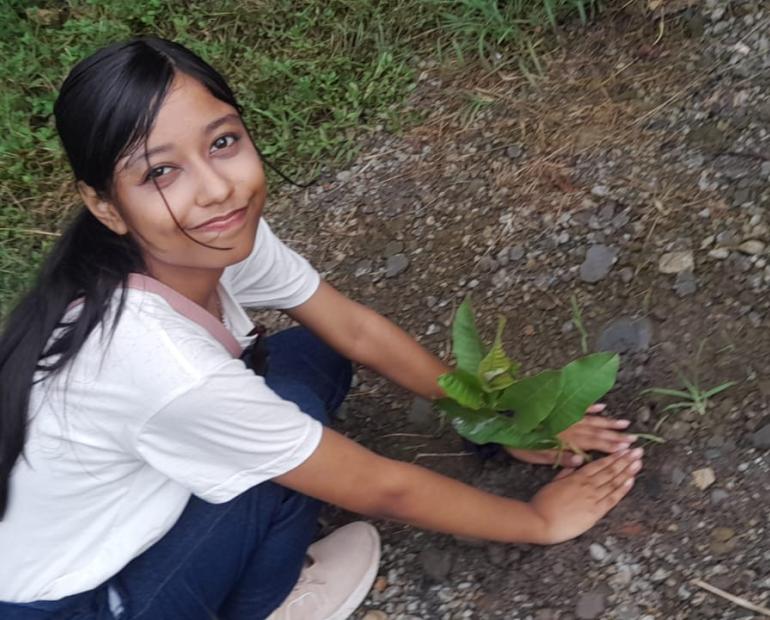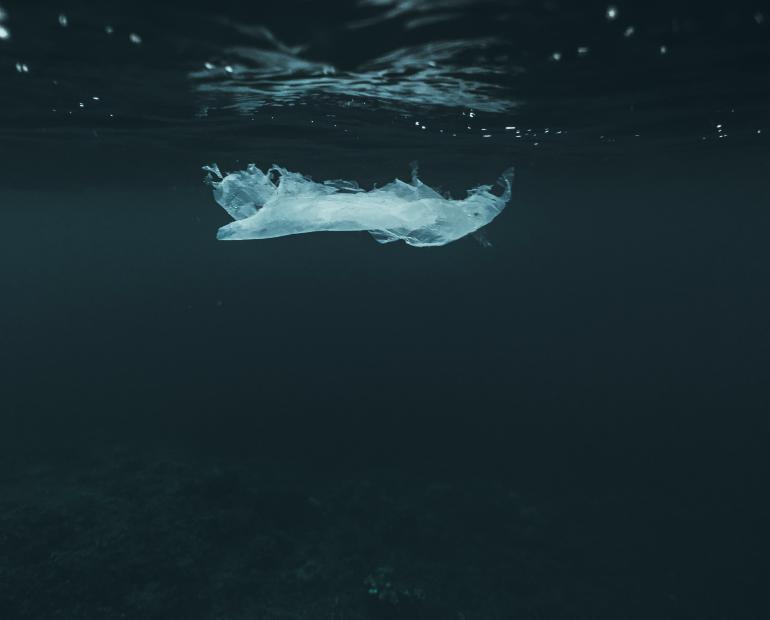
What do shoes, tea bags, T-shirts, and mobile phones have in common? It may come as a surprise that they all contain plastic, and it is not unlikely that most of the items you use in your everyday life contain plastic as well. There are 5.25 trillion pieces of plastic in the ocean with an addition of 8 million pieces every day, and at this rate, we could be left with more plastic than fish in the ocean by the year 2050.
I’m a 15-year-old passionate about sustainability, and I have the goal of playing a role in transforming the way we manufacture plastic.
Plastic pollution is not news to us; we’ve all likely heard about the amount that we produce and dispose of, and the detrimental impact this is having on the environment. The difficult part is that we can’t just stop using plastics — we use them across every industry, and that’s not going to change overnight. What we can do, however, is change how we make the plastic. If plastics were biodegradable and made of natural polymers, then we could start moving towards a future with sustainable materials. This can be possible with bioplastics.
Bioplastics are derived from biological sources, namely crops like sugar cane, potatoes, and corn. This contributes to a reduction in fossil fuel use, lower toxicity, and faster decomposition in comparison to conventional plastics. Nonetheless, although they are a big step-up from what we use today, they’re far from perfect. One flaw to consider is that we need to eat crops like corn. If we take a look at the production process of polylactide (PLA), the most popular bioplastic today, 1 kg requires 2.65 kg of corn. If the quantity of plastic produced every year came from corn-based sources, that would be over 715 million tonnes. This is a huge portion out of our food supply, and is arguably not sustainable or scalable, especially with the influence climate change is having on farming. Therefore, many researchers are turning to second-generation aquatic species, AKA crops that 1.) humans don’t consume and 2.) don’t need land to grow.
One popular example of a second-generation aquatic species is algae, which has high yields and short cultivation times. The problem here is that algae is difficult and expensive to harvest, therefore is not yet feasible for a bioplastic we want to commercialize worldwide. I looked at this back in May and thought to myself, what if there’s another second-generation aquatic species out there that’s even better than algae?
That’s when I came across duckweed. (Yes, it has a very strange name.)
Duckweed is a small and abundant species that floats on water and can double its biomass in 1-3 days. It’s a no-brainer to me, and an incredibly untapped market as opposed to something like algae. It also contains up to 45% protein, which means that if duckweed was used for a polymer, protein powder could be sold as a by-product.
This summer, I reached out to every farm in Ottawa to see if I could get duckweed and I ended up being able to get 5 kilos which I kept in basins in my backyard under nutrient starvation to accumulate starch while it was warm. The duckweed was very easy to harvest, and I could easily collect the amount I needed with a skimmer in the matter of a few hours.

The reason I wanted to accumulate starch was that duckweed can reach 75% starch content depending on the strand and cultivation conditions. This means that duckweed could be used for a starch-based plastic like PLA. I am currently working in the Carleton University lab in collaboration with Pond Biomaterials on this project, where I am doing an enzymatic saccharification protocol to break down the duckweed starch into simple sugars. After this stage, I will ferment the sugars by adding Lactobacillus bacteria in order to create lactic acid, which, in the form of lactide, can finally be polymerized into PLA.

Once I have a proof of concept, I will be working to program the PLA to have enhanced 3D printing properties. Pond Biomaterials just partnered with Adidas, so my ultimate objective is to be able to create a proof of concept that can be 3D printed to be incorporated into something like the midsole of a shoe. The possibility of getting to this point down the line will take a lot of time, failure, and lab work, but it’s all about the journey and I love what this work entails!
To tackle climate change, we must find a way to address plastic pollution. This does not necessarily have to be through eliminating plastics, but more so, reinventing the way in which they are made to create a circular plastics economy. Duckweed bioplastic could not only provide a cost effective and accessible material for countries all over the world, but it could minimize the need for fossil fuels, allow more food and land to be utilized for people, and provide simultaneous benefits like carbon sequestration and protein powder production. This is my vision, and I want to work to bring it to reality.






